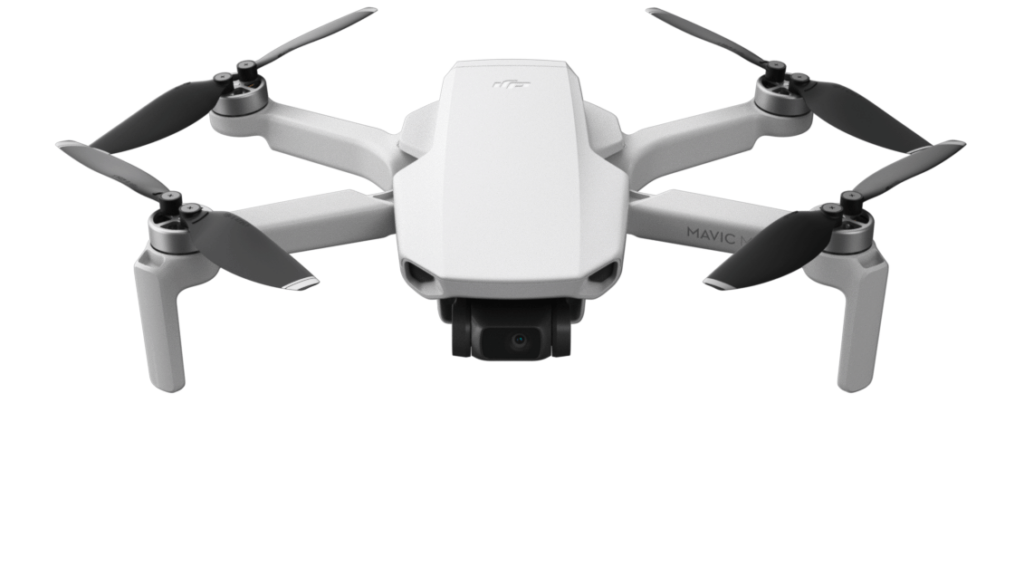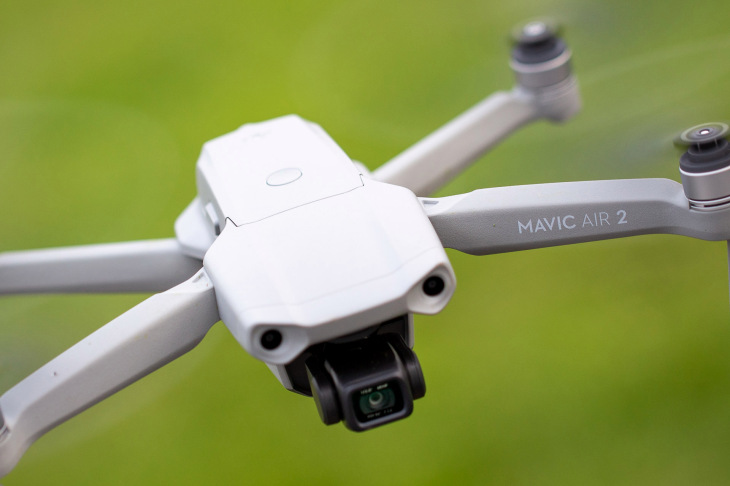In addressing what drones are, it is important to be aware of the fact that unmanned aerial vehicle technology (UAV) is constantly evolving as new innovation and big investment are bringing more advanced and sophisticated drones to the market every few months.
An unmanned aerial vehicle system has two parts, the drone itself and the control system.
UAV technology has to do with the aerodynamics of the drone, materials in the manufacturing of the physical drone, the circuit boards, and the chipset and software, which are the brains of the drone.
Some Level of Autonomy
Michael Perry, Public Relations Manager at the world’s largest drone maker, DJI, says that in understanding what drones are, it is necessary to first distinguish drones from their predecessors, the remote control helicopters. The crucial difference is that drones have “some level of autonomy.”
Perry explains:
“. . . they can fly, hover, or navigate without input from a pilot. When you’re fully engaged with every single part of the flight process, that’s technically not a drone. The ability to self- stabilize, to be able to hold a GPS-based position, that’s the level of autonomy that actually makes it an intelligent machine.”*
Types & Size
UAVs come in a wide variety of sizes, with the largest being mostly used for military purposes, such as the Predator drone. The next in size are unmanned aerial vehicles (UAVs), which have fixed wings and require short runways. These are generally used to cover large sections of land, working in areas such as surveillance.
The next in size are what is called “Vertical Take-Off and Landing” (VTOL), which are generally quadcopters, but not all. VTOL drones have the ability to take off, fly, hover and land vertically.
Many of the latest small drones are the size that can be launched from the palm of one’s hand.
The smallest drones are called “micro” drones, or “nano” drones. Nano drones have 80-100mm frame size while micro drones have 120-160 mm. In general, nano drones and quadcopters are miniature in size. These small drones are often used in a variety of industries, including mining, real estate, agriculture, aerial surveying, and medicine, etc. Nanotechnology is being used widely in the drone industry to reduce weight, to extend flight times and to make these useful robot helpers work harder.
Composite Materials
Unmanned aircraft is typically made of light composite materials to reduce weight and increase maneuverability and speed. The strength of such composite material makes it possible for military drones to cruise at extremely high altitudes.
The materials used to build the drone are also highly complex composites designed to absorb vibration, which decrease the sound produced.
Multiple Rotors
Another obvious difference between model aeronautics and drones is that smart copters have multiple rotors. While RC copters also can have multiple propellers, they are necessary to hobbyist drones (except for drones flown by the military) to be able to achieve the level of control necessary to be self-reliant.
Multiple rotors provide benefits, such as making drones more fail-safe, which means that if one of the motors fails, the aircraft can still function since the remaining motors working in concert are able to compensate for the failed motors. Furthermore, the more rotors an aircraft has, the more lift that aircraft will generate, which makes it possible to carry a heavier payload. In addition, having more rotors makes it possible to have smaller blades, making them more manageable, nimble, and safer to use.
Drones are typically equipped with a removable battery that provides around 12 minutes of flight time, or with extra batteries which allows for around 25 minutes of flight time. But more power means more weight, which is why these machines get such little airtime.
Controllers
Drones require a controller in order to be able to launch, land, and navigate. Controllers come in various forms, such as gamepad-like controllers, smartphones, and tablets. The purpose of controllers is to communicate with the drone, usually by using radio waves (typically run by 2.4 gigahertz radio waves). “To communicate with their aircraft, many drone controllers use Wi-Fi, which can be transmitted on the 2.4 gigahertz spectrum, and is something that smartphones and tablets can tap into without any accessories.”*
The smartphone revolution has developed onboard technology, such as a GPS chip inside the drone, that relays its location to the controller, and also logs its place of takeoff in case it needs to return unassisted. In addition, gyroscopes found in smartphones’ accelero-meters, are also included. Perry explains:
“Those accelerometers have gotten smaller, more affordable, and more powerful, making them able to give a lot more information. We’ve been able to take that size, cost, and power differential and put it into the platform to make something that’s even more accessible to everybody.”*
Furthermore, there is not only the shift toward more power, but also in reducing the price of drones, which has had a lot to do with its increasing popularity.
Onboard Sensors
Onboard sensors with its altimeter, informs the drone as to what altitude it is flying. This means that when the aircraft is set to hover in place, the chip will tell the drone to maintain that height. In addition, the GPS chip enables the drone within the x and z axes, and corrects course when adverse winds occur. Therefore, these machines are not easily pushed around. In fact, Perry claims that the larger rigs of DJI’s company are able to withstand wind gusts of up to 50 miles per hour.
Even more challenging to UAVs is probably the landing because they are a propellor-based craft, and thus are programmed to automatically land slowly. As Perry points out, “When you descend quickly there’s a state that’s well known to the helicopter pilot called the vortex ring state.”*
While drones may not know the “vortex ring state” by name, they can definitely feel it, because when they drop in altitude too quickly, they end up sinking into their own propellers. This vacuum of air is hard to escape even for seasoned pilots (of remote controlled aircraft or real helicopters). The reason for this is that when pilots throttle up to escape too quickly, they create a vacuum that is even stronger, that pulls the aircraft down even faster.
The DJI Aspire 1, with its onboard cameras, has a visual positioning system that uses a downward facing camera and two ultrasonic sensors when landing. When flying indoors or somewhere without GPS, the camera creates a real-time map of the ground below, and thus identifies a grid where it is able to plot points and find safe places to land. In fact, if the drone drifts from the points, it can stay locked in position by visually triangulating to correct itself. In the meantime, the ultrasonic sensors instruct the drone effortlessly as to how close it is to the ground. The result is that technology can make landing a drone look easy, even in difficult terrain.
- Obstacle Detection & Collision Avoidance Technology
A very important development in drone technology is obstacle detection and collision avoidance technology with which the latest high tech drones are now equipped. These drones use obstacle detection sensors to scan the surroundings, and at the same time software algorithms and simultaneous localization and mapping (SLAM) technology produce, the images into 3D maps, which enable drones to sense and avoid obstacles. These systems fuse one or more of the following sensors to sense and avoid:
- Vision Sensor
- Ultrasonic
- Infrared
- Lidar
- Time-of-Flight (Tof)
- Monocular Vision*
Simultaneous localization and mapping (SLAM) is a great movement forward in drone technology since a robot/drone is able to create a map of its surroundings and orient itself accurately within the map in real time. This is a very sophisticated task, and it currently exists at the frontiers of technology, research, and design.
Future
In addressing what drones are, it is obvious that unmanned aerial vehicle technology (UAV) is constantly evolving as new innovation and big investment are bringing more advanced and sophisticated drones to the market every few months. We have seen that in drone technology there is not only a shift toward more power and sophistication in drone development, but also in reducing the price of drones, which has had a lot to do with its steady and increasing popularity.



